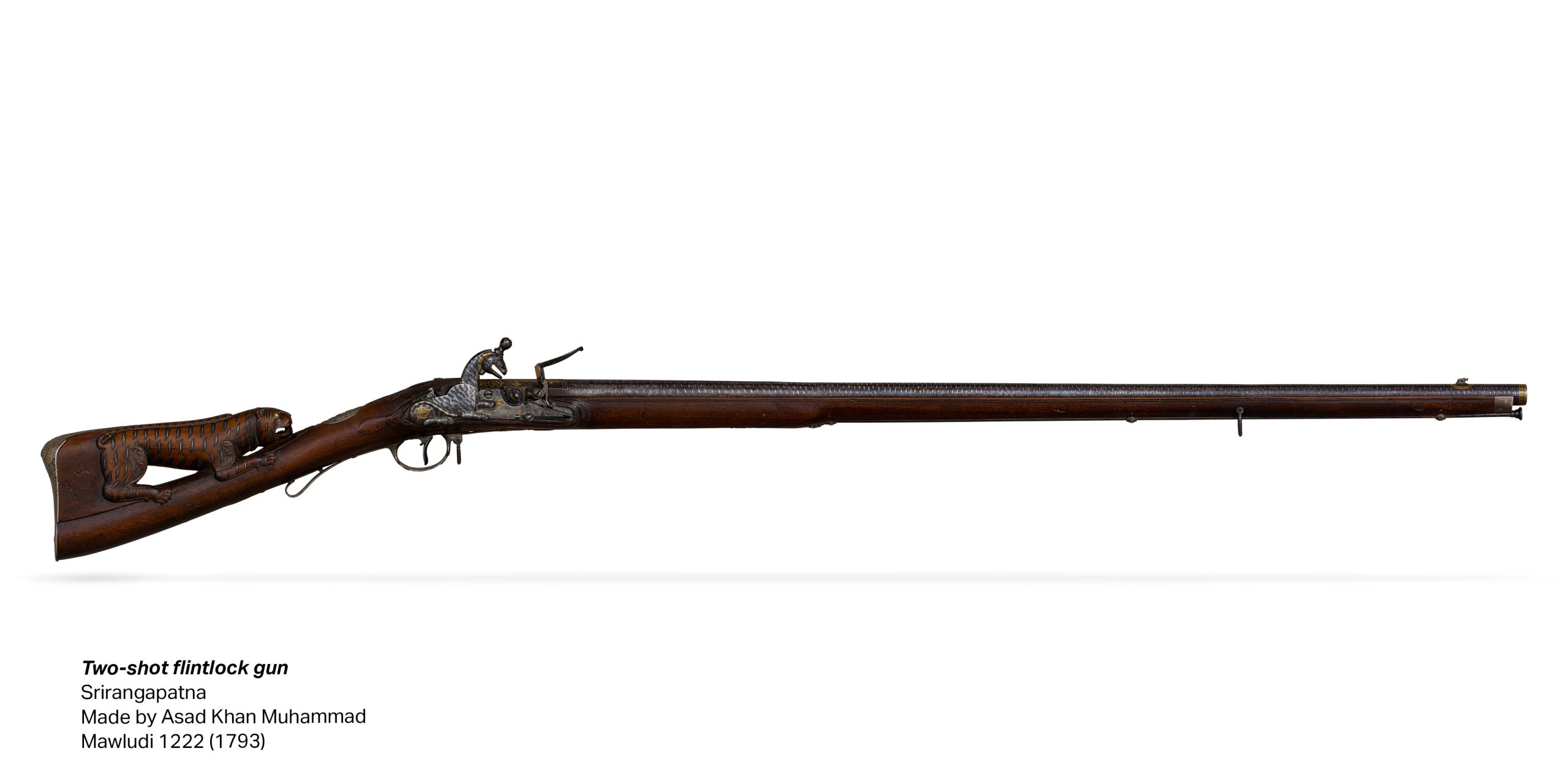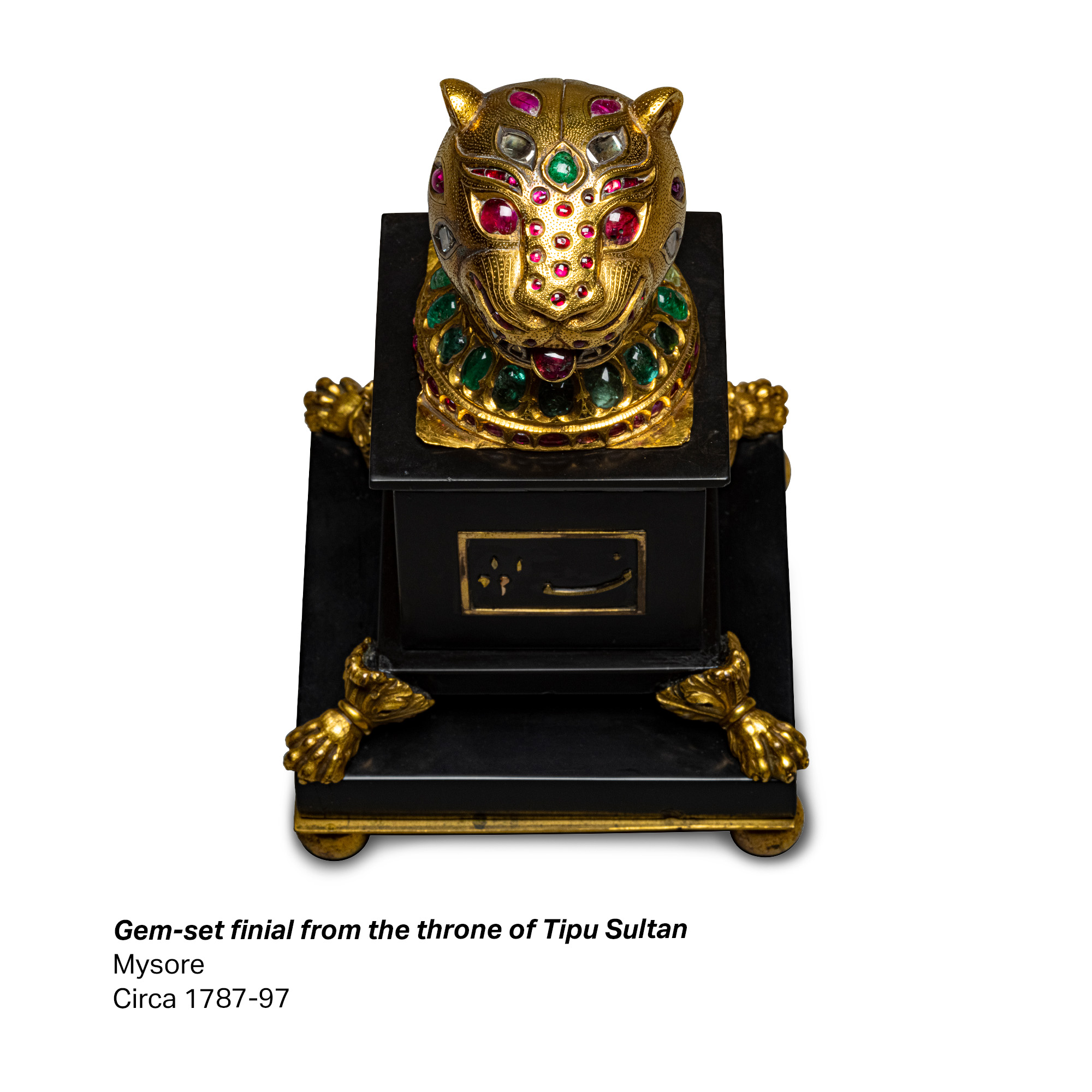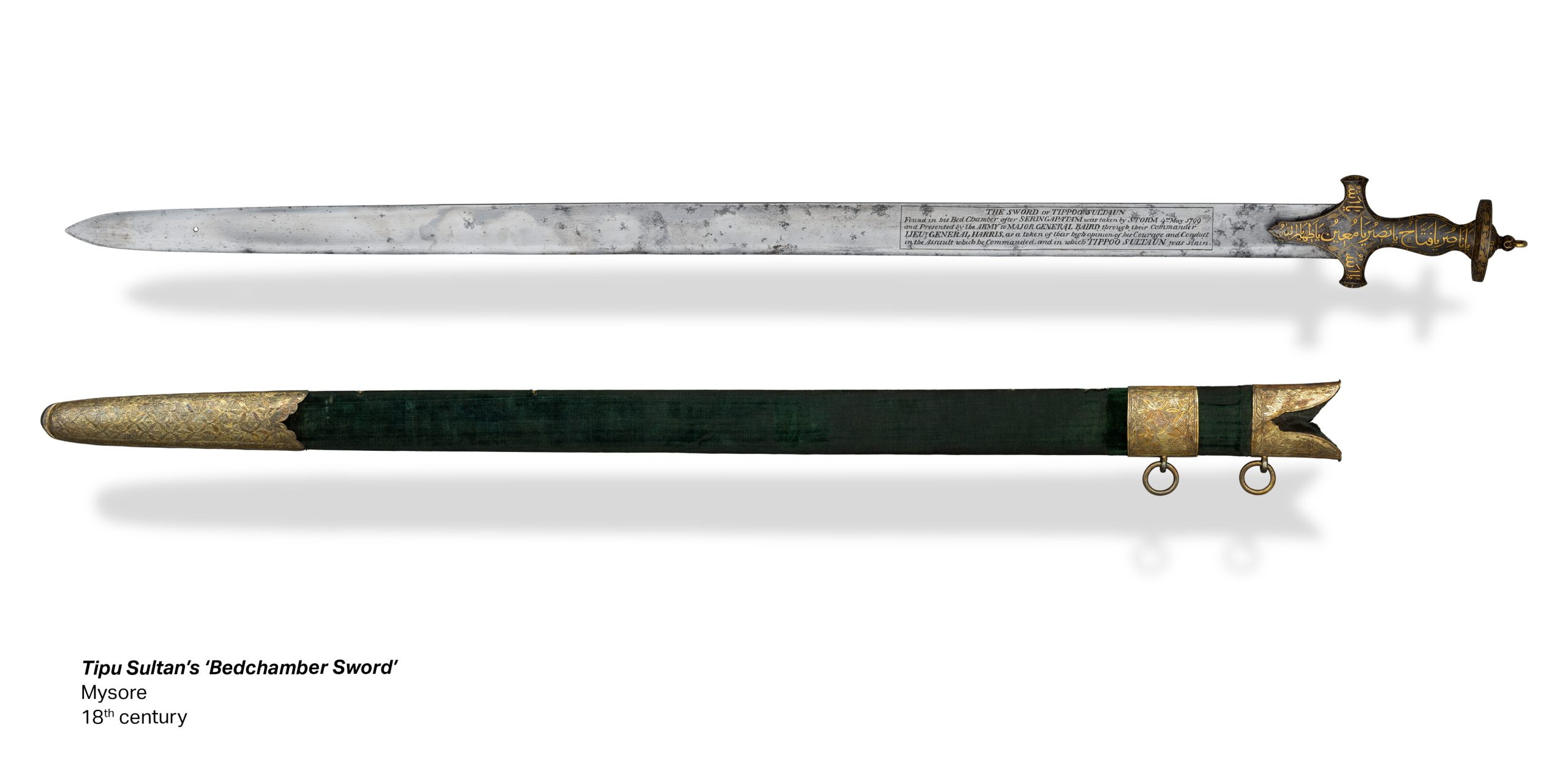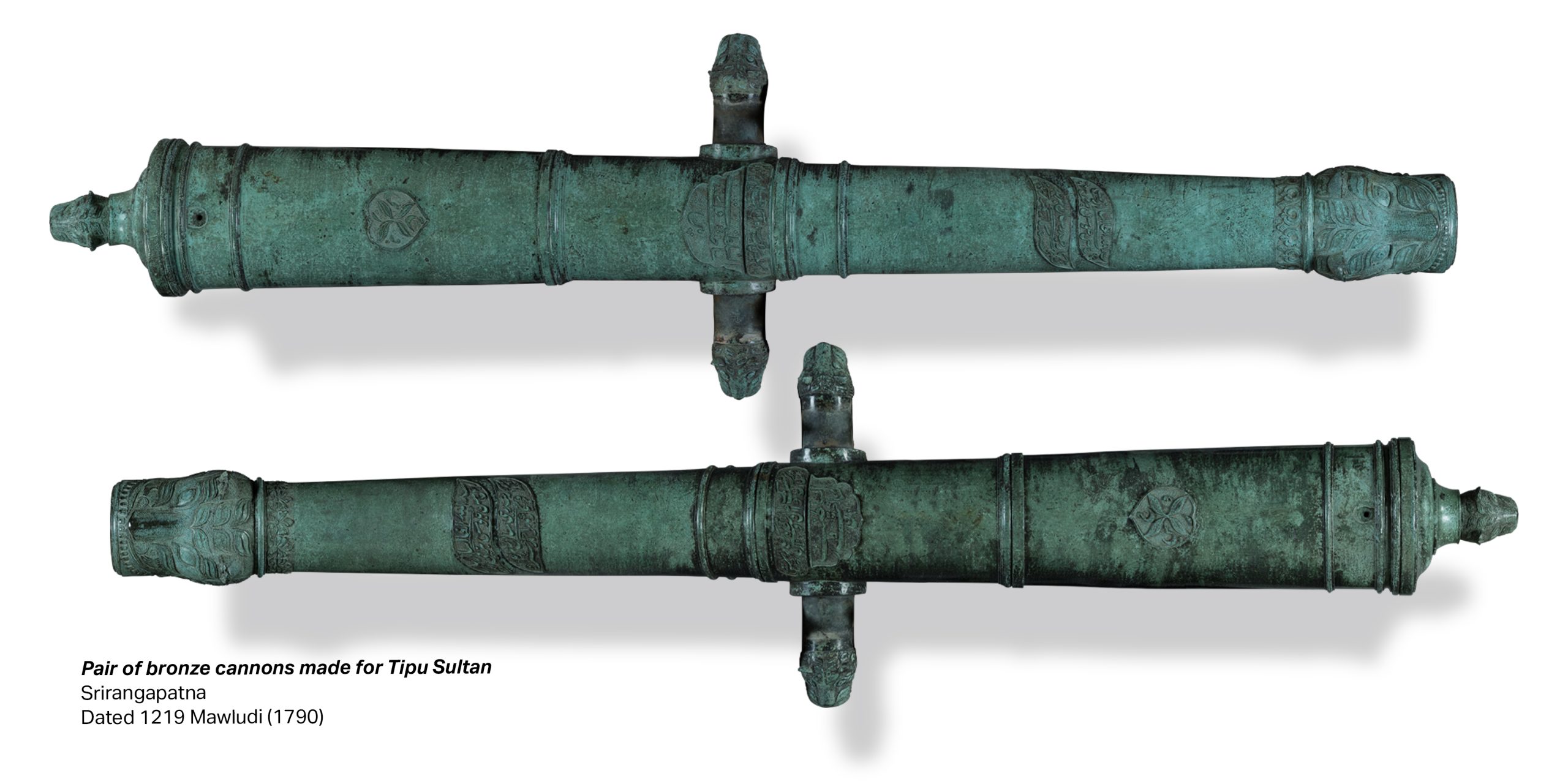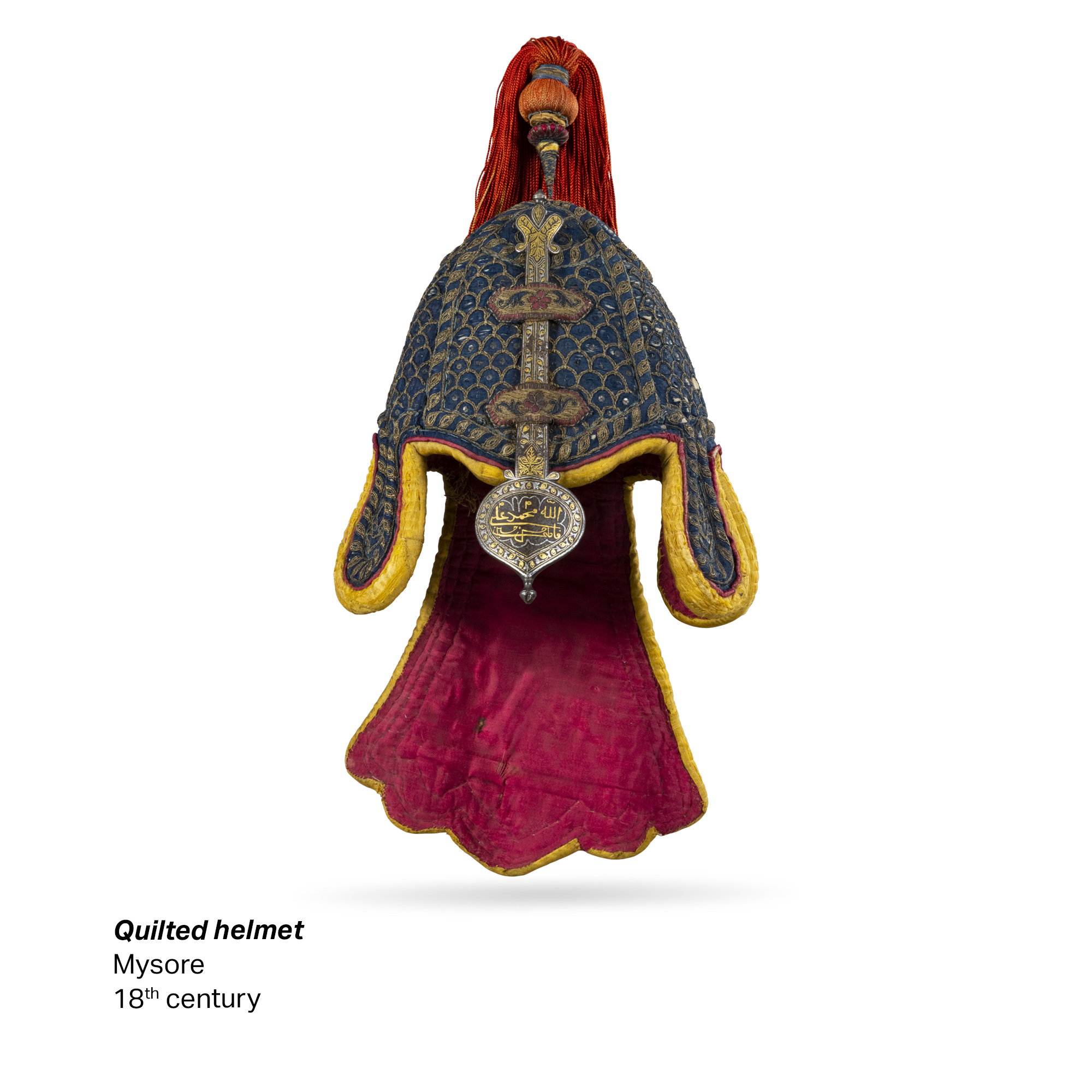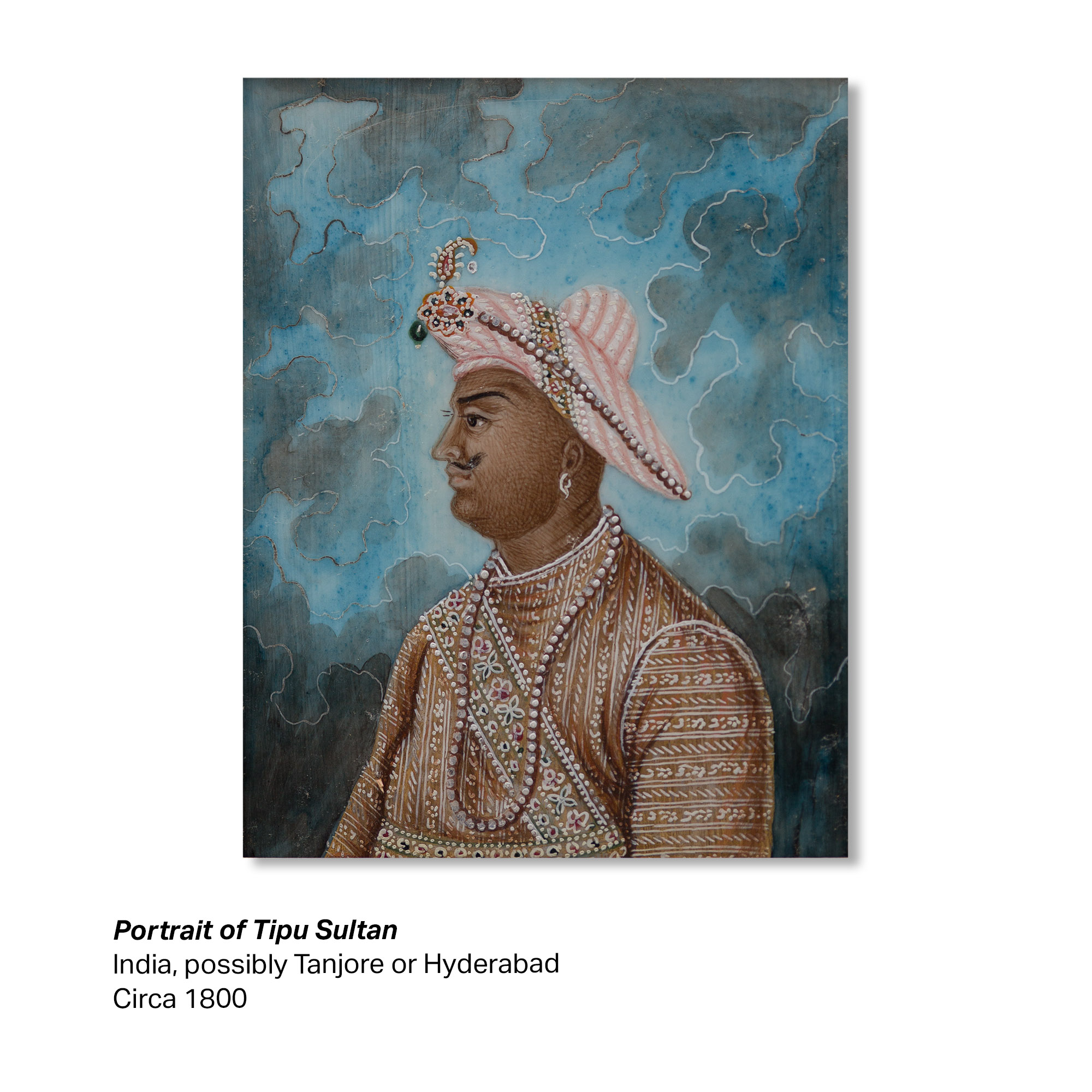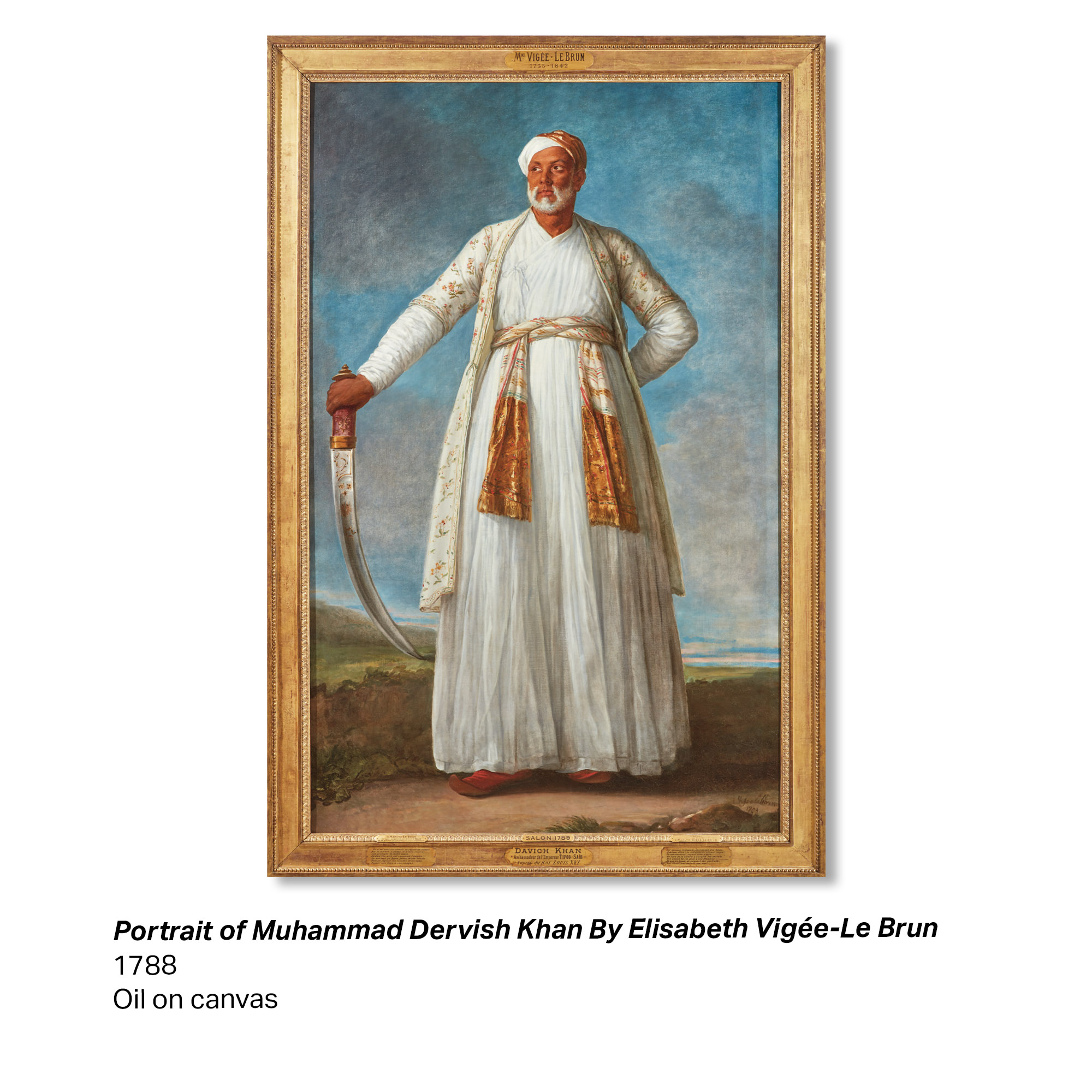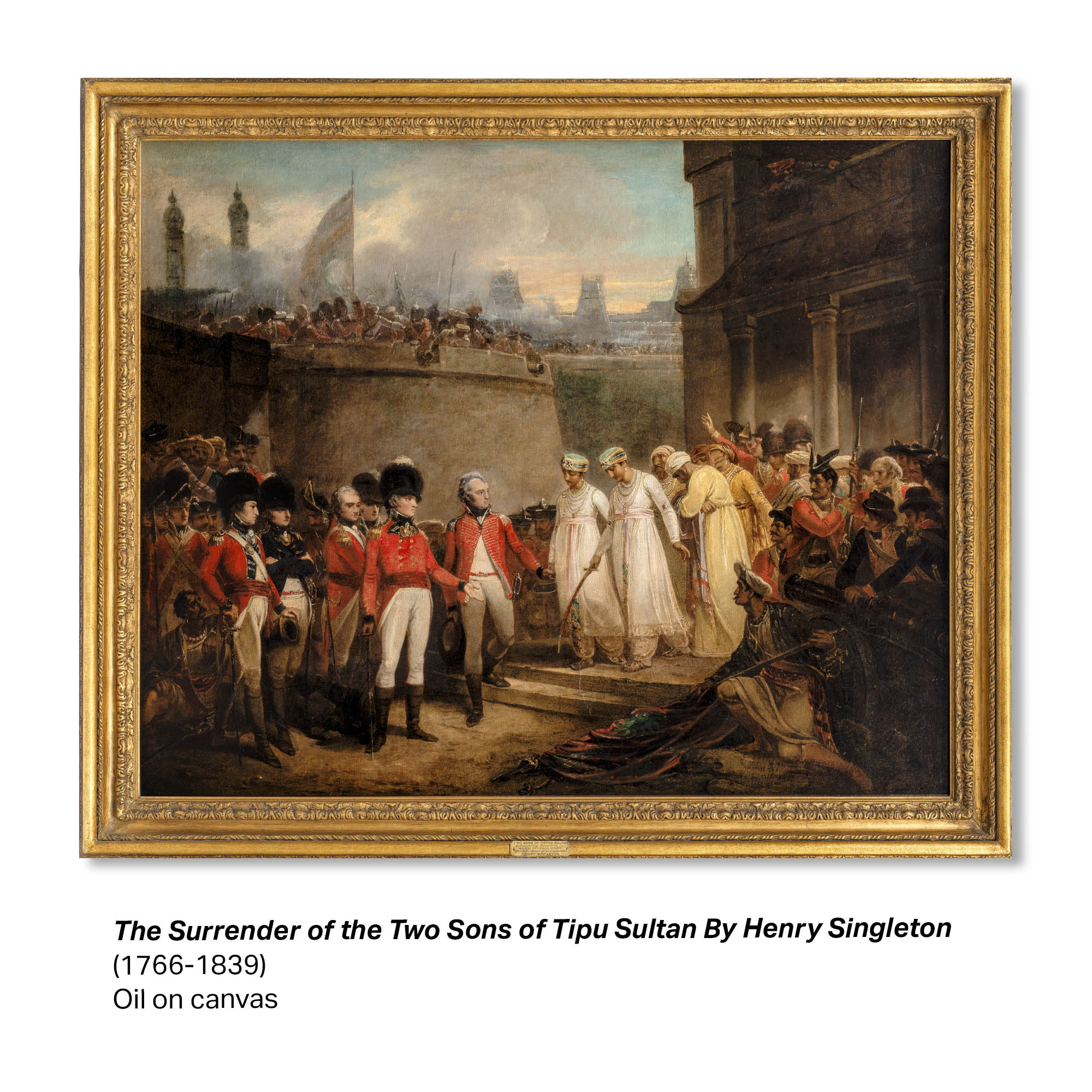
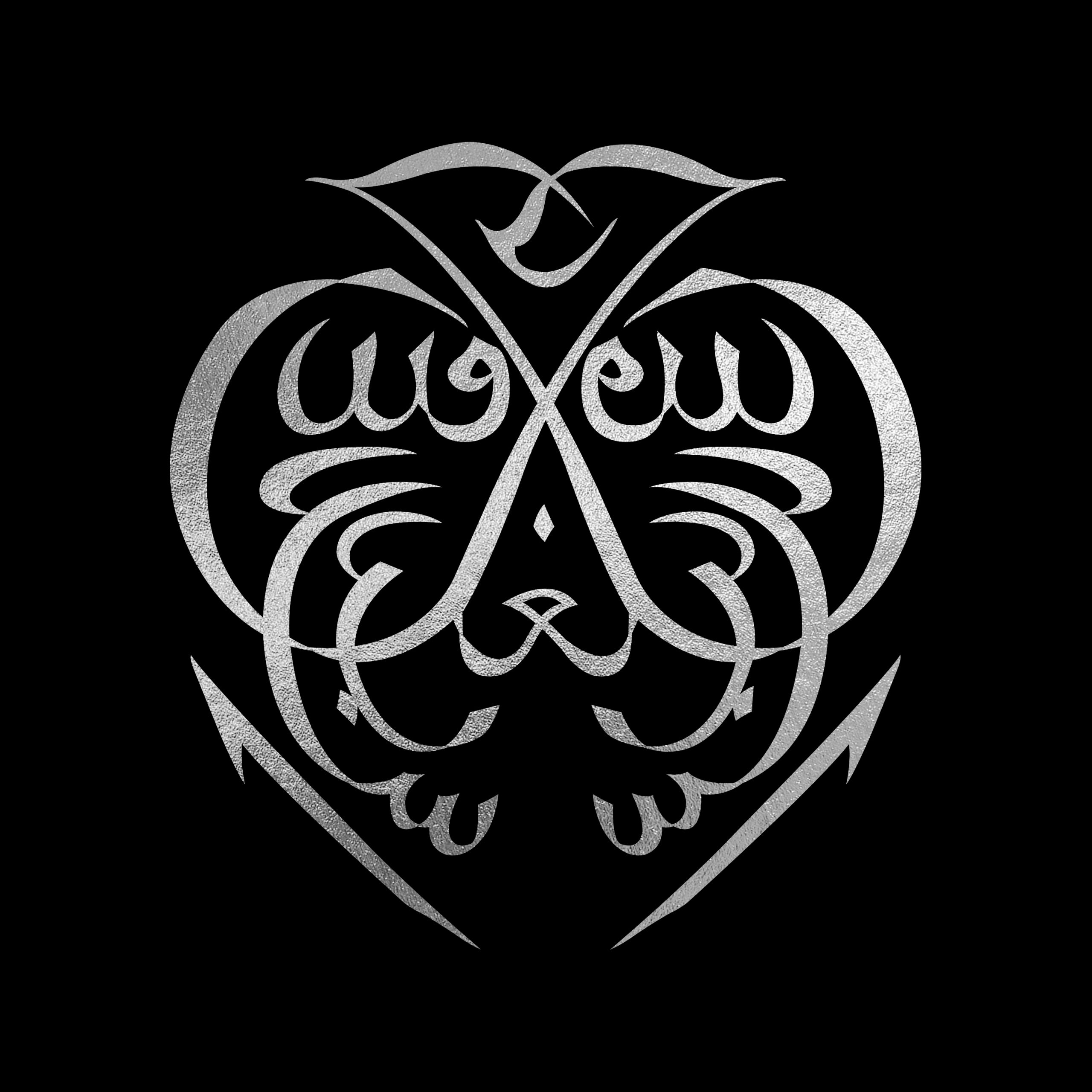
This landmark exhibition is the largest ever held, displaying prized works from one of India’s most remarkable dynasties. Between 1761 and 1799, Haider Ali and his son Tipu Sultan ruled Mysore, becoming the most persistent obstacle to British empire-building. In the words of Tipu Sultan, “it is better to live as a tiger for a day than as a sheep for a hundred years”. He died fighting against the East India Company in 1799, but his legacy lives on in the artefacts created during this short dynasty.
Haider Ali is less well known than his son, although both are largely forgotten today. What the two rulers are generally remembered for is endless conflict with the British. When European powers became more involved, regional rivalries intensified. Not only were the Mysorean armies superior, the weapons produced by Tipu Sultan were among the highest quality and most inventive of that era. Their rocket technology was so far ahead of anywhere else in the world, the British copied it extensively.
Tipu Sultan learnt much from his father at a young age, especially the arts of war. He had an inquiring mind and wrote a manual on warfare as well as recording and analysing his dreams and assembling an extensive library. A tireless innovator, Tipu reformed the coinage and calendar of Mysore.
Both rulers constantly sought economic opportunities for their kingdom. The commercial vision of Tipu Sultan was irrepressible. Part of that was weapons manufacture. Many of his guns and swords are in the exhibition, and it is his personal favourites that cause the most excitement among collectors. His finest sword, kept by his side as he slept, and his most innovative gun are as superb to look at as they technically advanced.
Throughout four Anglo-Mysore Wars it was the weapons that attracted British attention. Their quality and inventiveness were superior to anything that Mysore’s enemies had seen before in India. Later, the British plundered as much as they could and sent it back to England. The personal weapons were always of far greater interest. Their association with the dead ruler and their conspicuous quality made them real trophies. There was also the artistry of their design, often described as ‘curious’ and occasionally as ‘beautiful’.
Some items were too large to take away. Tipu’s magnificent throne was torn apart for its gold and jewels. The exhibition features one of the few gem-encrusted gold finials that survived the looting. Even the plain wooden feet of the throne – shaped like a tiger’s paw – were treasured by the British. Their respect for Tipu became more apparent after his death. This event was headline news in the UK.
There are no official portraits of Tipu Sultan. Instead, he adopted the persona of a tiger, encouraged by the British who called him the ‘Tiger of Mysore’. He chose tiger stripes as a decorative motif on everything from his swords and guns to his soldiers’ uniforms. The face of a tiger became a different symbol of his authority, composed from Arabic words meaning ‘Victorious lion of Allah’. There was a lot of confusion between lions and tigers but no mistaking the bubri stripes. According to legend, Tipu had overcome the biggest cat on the planet with either his bare hands or a sword.
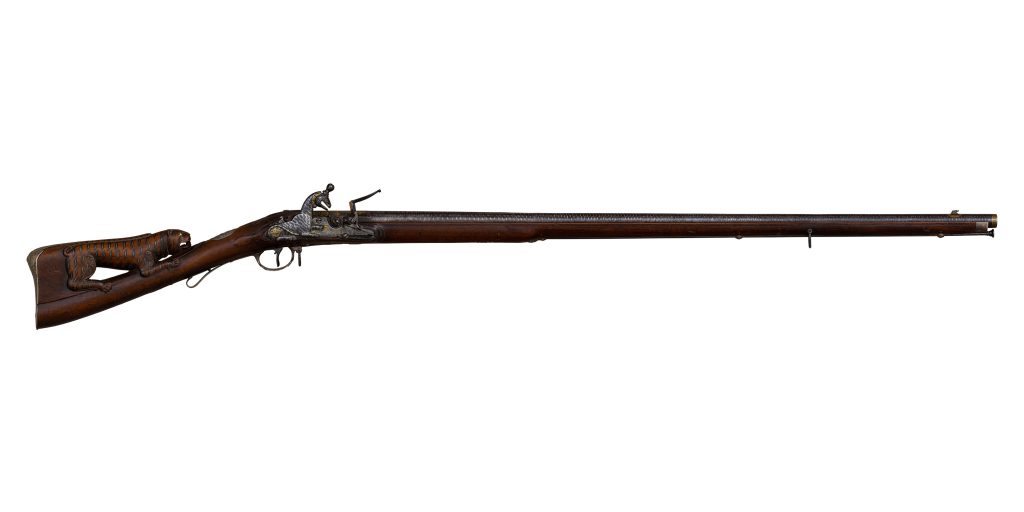
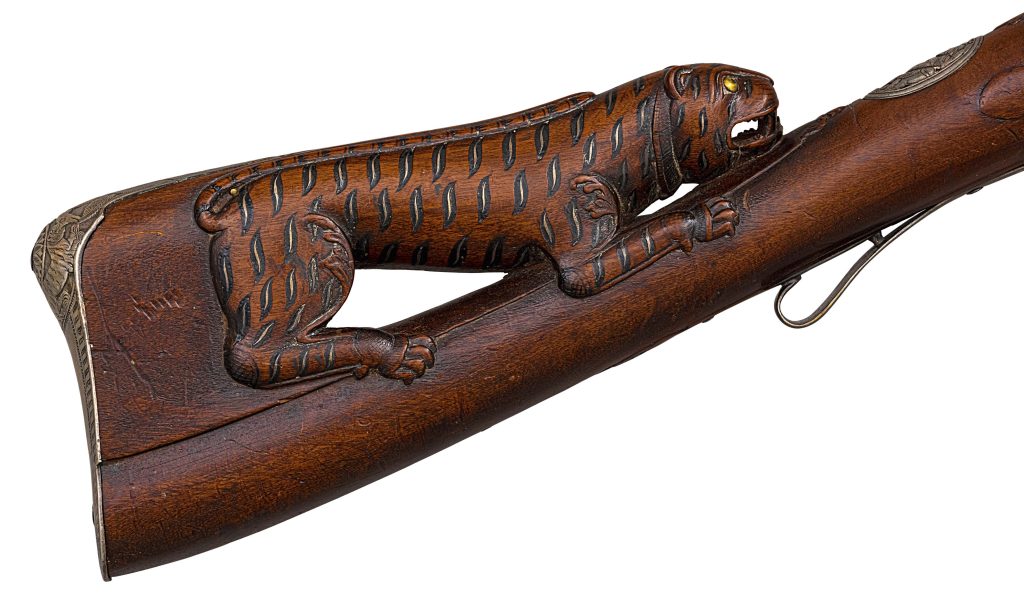
As hard as the British tried to rid Mysore of its Muslim rulers, it was the UK which was most enthralled by the fallen sultanate. It became a badge of honour for families linked with India to proclaim their part in his downfall. Almost anything belonging to Tipu Sultan did the job perfectly. The most significant treasures went to Britain’s royal family and senior commanders of the fourth Anglo-Mysore War. They were then kept as precious heirlooms in the UK for the next 200 years.
‘More than a Day as a Tiger’ invites visitors to explore the rich heritage of these two influential and largely forgotten figures. IAMM has the finest collection of artefacts from the Mysore sultanate outside the UK. The exhibition delves into the symbolism, ideology and historical legacy that turned Tipu Sultan and Haider Ali into heroes of anti-colonial resistance who were later sidelined in their homeland.
